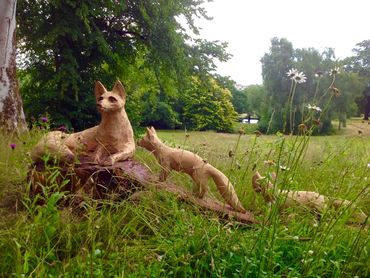A guide to the Botanical Gardens
Centenary of Singleton Park. 1919 - 2019
Centenary of Singleton Park. 1919 - 2019
Centenary of Singleton Park. 1919 - 2019

To celebrate the Centenary of Singleton Park being in public ownership FSBG commissioned a bi-lingual commemorative panel with financial support from Swansea Council . It is displayed in the Botanical Gardens.
This panel was unveiled by descendants of the Vivian family on Sunday 4th August 2109.
- You can find out more and read the content of the commemorative panel on Pamela Morgan's History Blog.
- Just click the 'FIND OUT MORE" button below.
Botanical Gardens Singleton Park
Centenary of Singleton Park. 1919 - 2019
Centenary of Singleton Park. 1919 - 2019
There is something to see throughout the year in the Botanical Gardens. The herbaceous borders are a fantastic sight from late March until mid October and the variety of glasshouses offer shelter in inclement weather. So even during the harsh winter months the garden has lots to offer.
In 1919 the private estate of the wealthy Vivian family was bought by the Swansea Corporation for use as a public park. In 1926 the Educational Gardens were officially opened as a “collection of economic plants and British flora”. Renamed in 1991 as the Botanical Gardens they contain a renowned double herbaceous border and many mature trees of national importance. In addition there are fine specimens of rare and exotic plants from around the world as well as a rock garden, herb garden, and the new wildflower garden which opened in 2017.
The 40 metre double herbaceous borders were part of the original Educational Gardens created in the 1920’s and their layout is little changed since those times. It is entirely possible that some of the plants found here are divisions of those originally planted.
The Glasshouses
Centenary of Singleton Park. 1919 - 2019
The Glasshouses

You will find fine specimens of rare and exotic plants from around the world. You will find the glasshouses in the botanical gardens at Singleton park.
The Botanical Gardens in Singleton Park are open daily from 10 am.
Please note that not all facilities will be open. This includes the Glasshouse and some toilet facilities in Singleton Park.
NOTE : THE GLASSHOUSES ARE CLOSED AT PRESENT- due to safety concerns.
History
1919
1919
1919
The private estate of the wealthy Vivian family is bought at auction by the Swansea Corporation for the sum of £90,000 for use as a public park.
1923
1919
1919
The new Singleton Park is “thrown open to the public on a Sunday”. Park Superintendent Daniel Bliss, who trained at Kew Gardens, began his ambitious plans to oversee the transformation of the park and garden.
1926
1919
1939 - 1945
The Educational Garden officially open to the public on May 25th as a “collection of economic plants and British flora”.
1939 - 1945
1939 - 1945
1939 - 1945
Part of the Garden is turned over to growing vegetables for the Dig for Victory campaign. In 1944 over 1500 American troops were billeted under canvas in the wider park. After training on local beaches the troops left for the D-day landings on Omaha Beach, Normandy.
1960
1939 - 1945
1960
By the sixties, the Educational Gardens employs 6 gardeners and 2 apprentices to tend to the increasingly important collection of plants.
1987
1939 - 1945
1960
After sixty years the original wooden glasshouses had become unsafe. Over the next few years they are demolished and replaced with aluminium structures which survive to this day.
1990
1990
1990
A superb ornate eighteenth century pond and fountain dated from 1773 is moved from Castle Gardens to this site.
1991
1990
1990
The Educational Gardens are renamed as the "Botanical Gardens"
1994
1990
1994
Run by a group of volunteers, the Friends of the City of Swansea Botanical Complex , FCSBC, is founded with the aim of supporting the work of the Botanical Complex.
2006
2006
1994
With financial help from FCSBC, Tŷr Blodau building is opened. This purpose built education and visitor centre hosts a programme of activities related to horticulture and wildlife as well as being available for hire.
2017
2006
2017
FCSBC raises funds and opens an extension to the Botanical Gardens. The Wellbeing Garden is the latest page in the Gardens’s story – it is a “little slice of wild” created among the more formal setting of the traditional Botanical Gardens.
Read about the history of the old glasshouses
Visit the family area in the Wellbeing Garden



Please note the glass houses are closed until further notice due to health and safety concerns
Also visit the Glasshouses children will love to find "Cherry the Chimp" and her baby, Daddy chimp is somewhere climbing a tree. And spot the parrot



Friends of Swansea Botanical Gardens
The Botanical Gardens, Singleton Park, Swansea, SA2 9DU, United Kingdom

Volunteering Opportunities at the Botanical Gardens
There are opportunities in our plant shop and as horticultural volunteers
Cookies . Privacy.
FSBG : 2024
To help us provide you with the best browsing experience possible this site uses cookies Find out how you can manage and disable your cookies here
